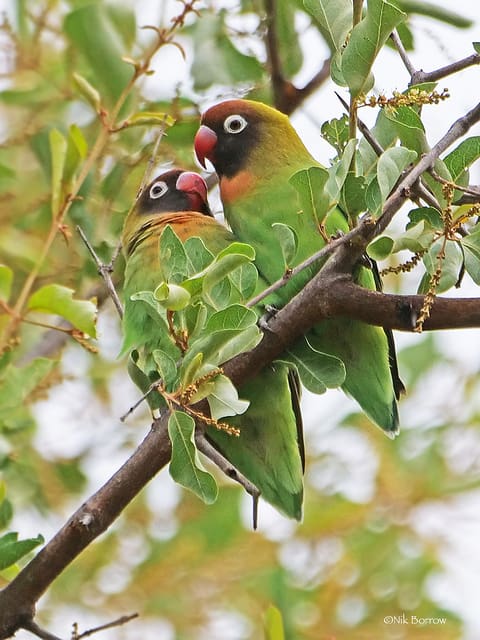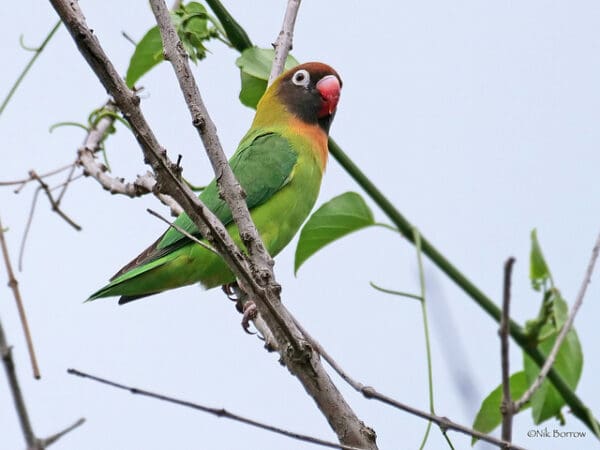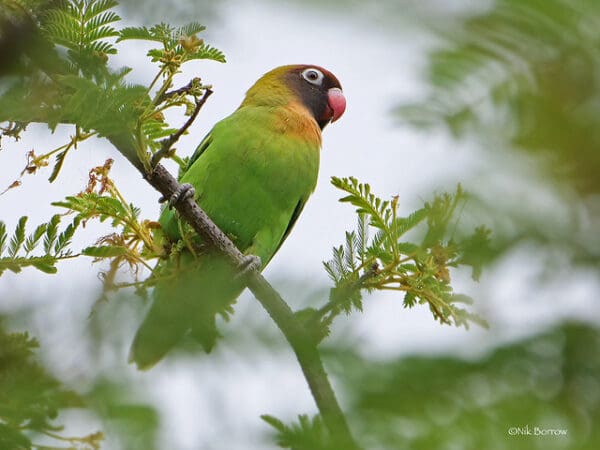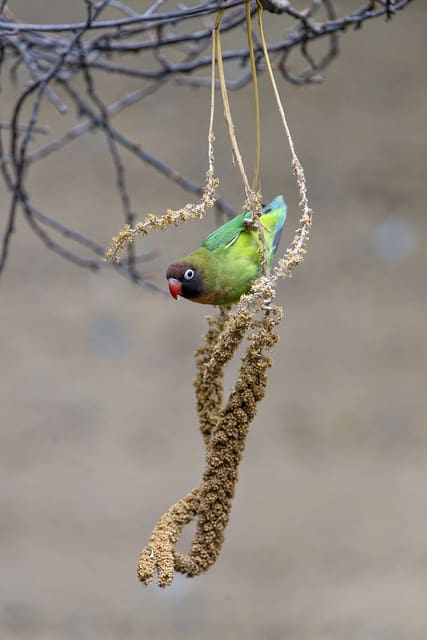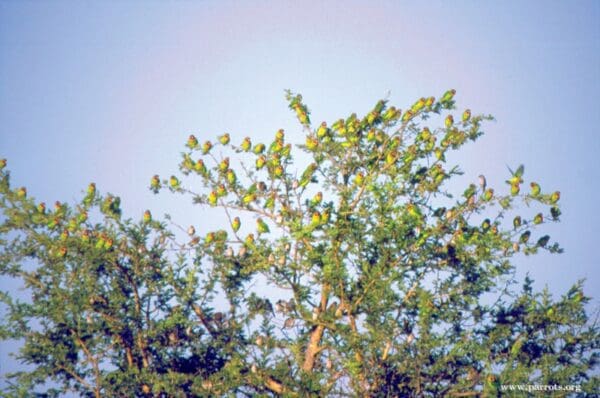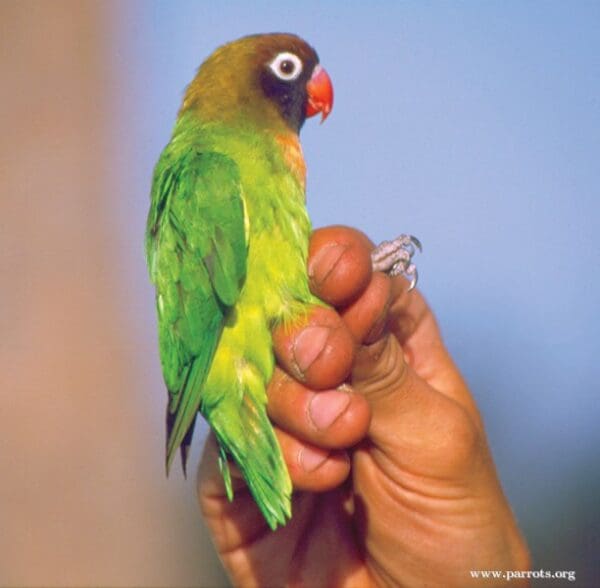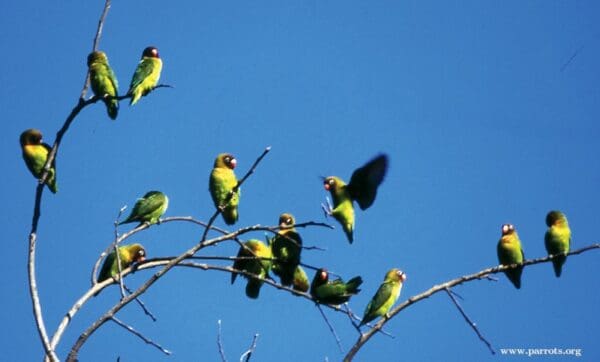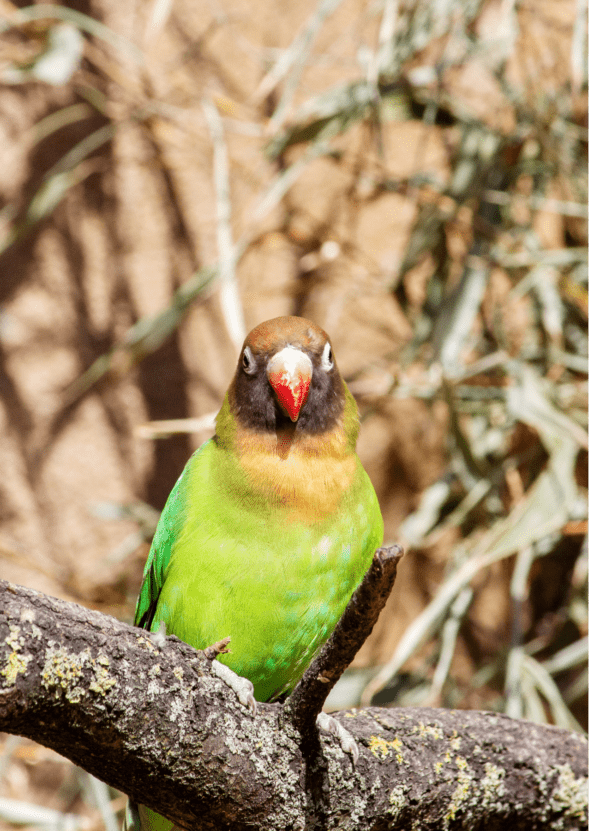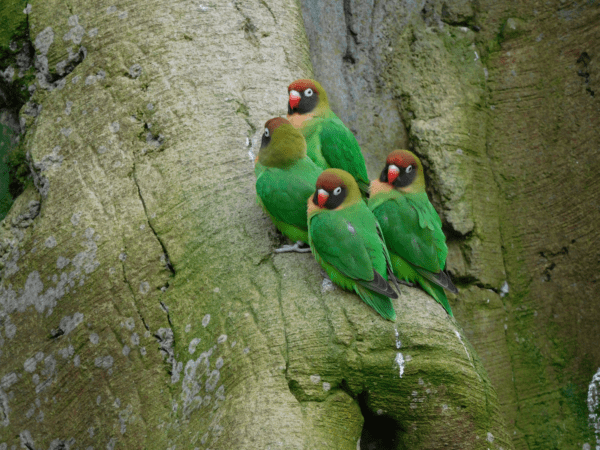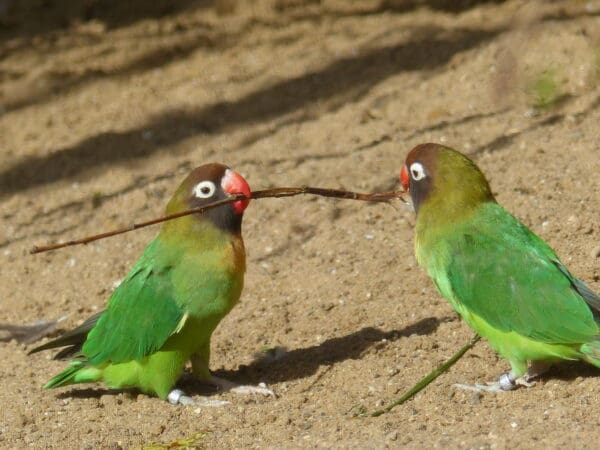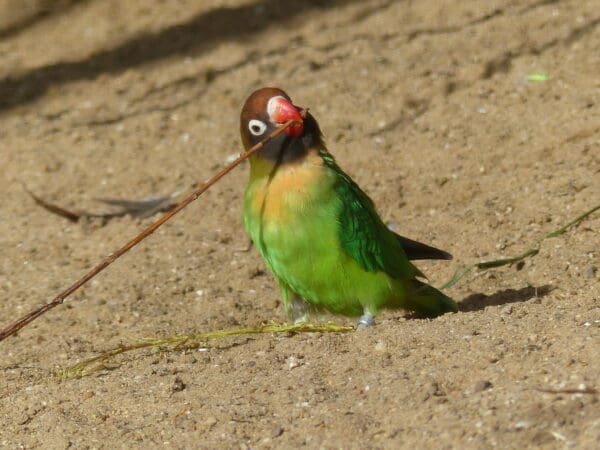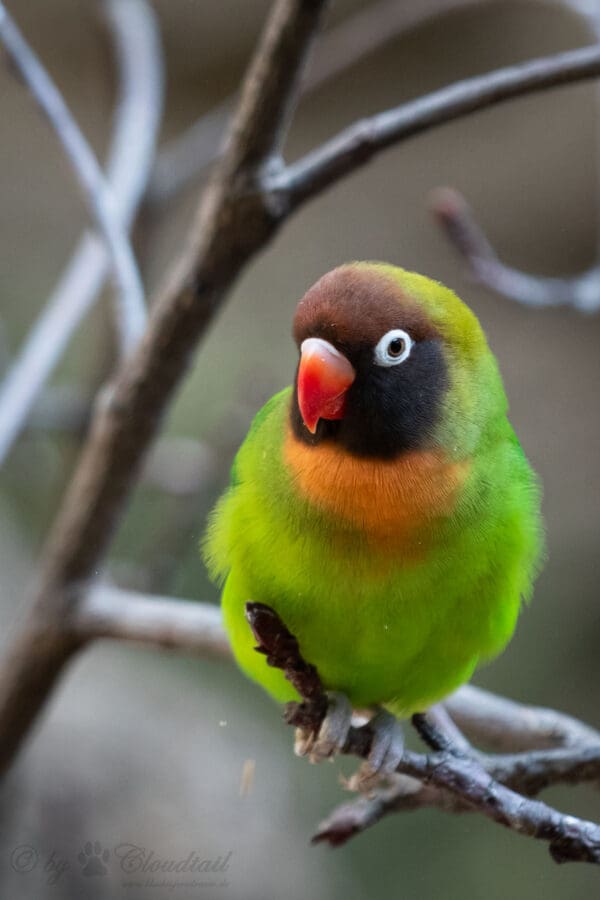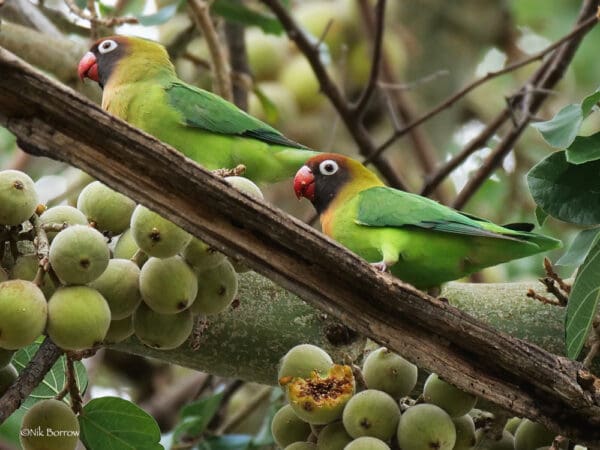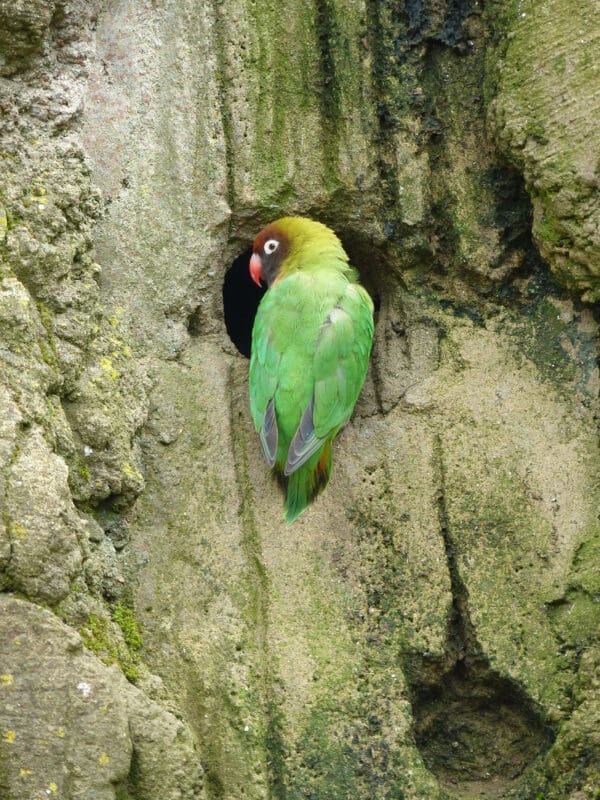Black-cheeked Lovebird
Also known as:
Black-faced Lovebird
Also known as:
Black-faced Lovebird
![© Nik Borrow [CC BY-SA 2.0] via Flickr Wild Black-cheeked Lovebirds perch in a tree](https://parrots.org/wp-content/uploads/2023/01/wpt_Black-cheeked-Lovebird_1108-11-100x100.jpg)
![© Nik Borrow [CC BY-SA 2.0] via Flickr A wild Black-cheeked Lovebird perches in a tree](https://parrots.org/wp-content/uploads/2023/01/wpt_Black-cheeked-Lovebird_1108-10-100x100.jpg)
![© Nik Borrow [CC BY-SA 2.0] via Flickr A wild Black-cheeked Lovebird perches in a tree](https://parrots.org/wp-content/uploads/2023/01/wpt_Black-cheeked-Lovebird_1108-9-100x100.jpg)
![© Tambako the Jaguar CC BY-SA 2.0] via Flickr A wild Black-cheeked Lovebird feeds on millet](https://parrots.org/wp-content/uploads/2023/01/wpt_Black-cheeked-Lovebird_1108-8-100x100.jpg)
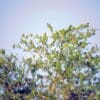
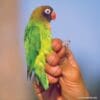
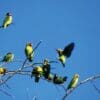
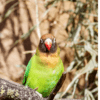
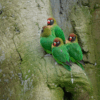
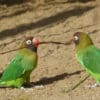
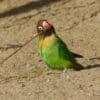
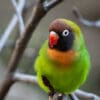
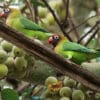
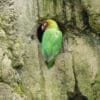
DID YOU KNOW?
Because the agricultural potential of the lands where this species is from is poor the possibility of large-scale habitat loss due to cultivation and expansion is not impending.

Agapornis

nigrigenis
Size:
13-14 cm (5-5.5 in)
Weight:
40 g (1.4 oz)
Subspecies including nominate:
one
Colour Adult:
Both adults dark face with olive-coloured nape; green body and rump; pinkish/rust patch on chest; tail green. Bold white eye-ring, dark eye. Red beak.
Colour Juvenile:
As in adult but with dark green underparts; black at base of beak.
Call:
Shrill and high-pitched chattering.
Black-cheeked Lovebird – AVoCet Cornell Lab Macaulay Library
More Information:
Content Sources:
CITES
Avibase
BirdLife International
A Guide to Parrots of the World, Juniper and Parr, 1998
Cornell Lab of Ornithology/Birds of the World
Parrots: Status Survey and Conservation Plan 2000-2004, Snyder, McGowan, Gilardi and Grajal, 2000.
Parrots of the World, Forshaw and Cooper, 1977, 1989.
Parrots of the World, Forshaw, 2006.
Parrots in Aviculture, Low, 1992.
Parrots: Their Care and Breeding, Low, 1986.
Captive Status:
Rare in aviculture.
Longevity:
20 yrs
Housing:
Cage or aviary, indoors or outdoors, minimum length 1.2 m (4 ft).
Diet:
Mixture of small seeds (canary, millet and oats); fruits such as apple, orange, banana; vegetables such as green leaves, carrot, celery, green beans and peas in the pod; spray millet; complete kibble.
Enrichment:
Loves baths, fir tree and other branches, wood toys, swings, ladders, mirrors, vegetable-tanned leather chewable toys.
Nest Box Size:
Vertical box, 6″ x 6″ x 6″ (15 cm x 15 cm x 15 cm).
Clutch Size:
4 to 6
Fledging Age:
6 weeks
Hatch Weight:
—
Peak Weight:
—
Weaning Weight:
—
World Population:
3500-15,000 individuals, decreasing.
IUCN Red List Status:
Vulnerable
CITES Listing:
Appendix II
Threat Summary:
A BirdLife ‘restricted-range’ species. Affected by trapping for the wild bird trade; also habitat loss and drought conditions and changing agricultural practices (from sorghum to maize).
Range:
Highly restricted range, from southern Kafue National Park, southwestern Zambia along Zambesi valley to Victoria Falls, Zimbabwe.
Habitat:
Found in mopane and Acacia woodland; also occurs in riparian forests and areas with fig trees. Found at 600-1000 m (1968-3280 ft).
Wild Diet:
Forages for seeds including: Amaranthus, Rottboellia exaltata, Rhus quartiniana, Albizia anthelmintica, Combretum massambicense and Syzygium guineense, and grass seeds Hyparrhenia and Eragrostis; also young leaves of Pterocarpus antunesiana, grain, flowers, buds, young leaves and berries.
Ecology and Behaviour:
Generally stays near water source, found in flocks of up to a few dozen birds. May roost communally.
Clutch and Egg Size:
4 to 6, slightly elliptical, 21.5 x 16 mm (0.8 x 0.6 in).
Breeding Season:
November–December in Zambia; nesting is in large mopane trees.
Related Links:
—
